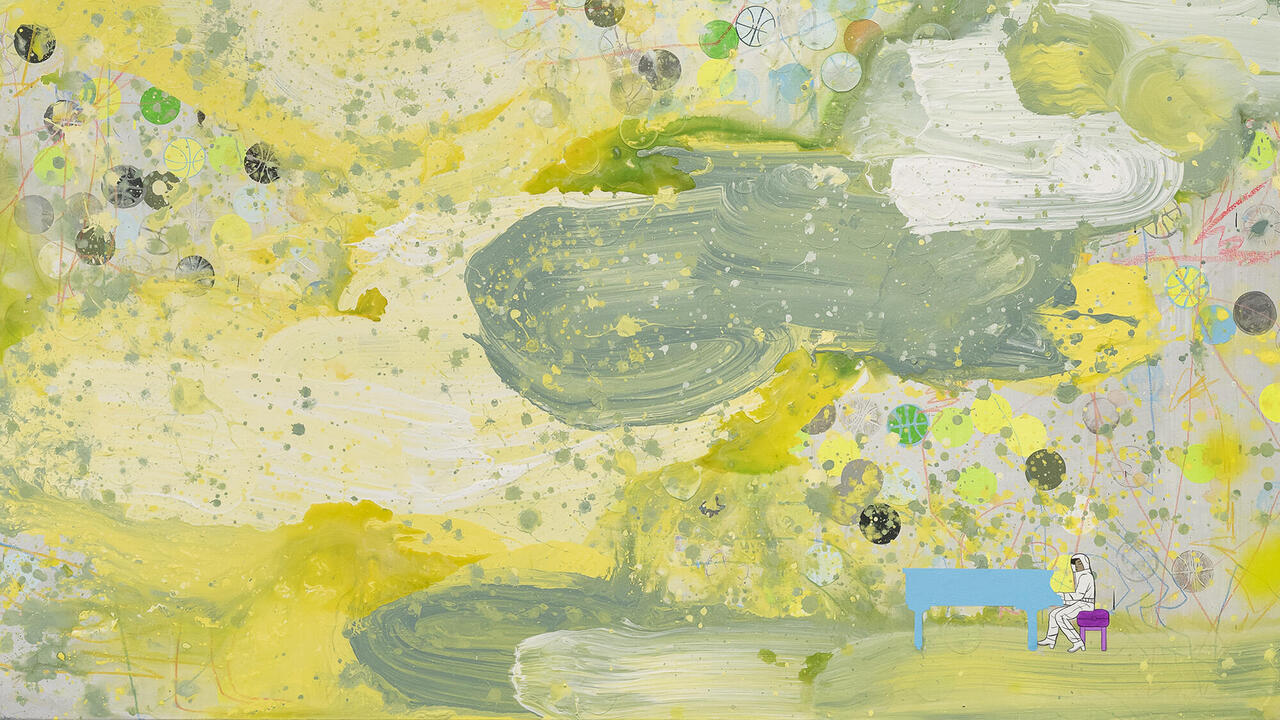Tomoyoshi Murayama

The history of modern art in Japan begins with the existential crisis resulting from the institutionalization of the foreign concept of ‘fine art’ during the social reform and Westernization campaign of the Meiji era (1868–1912). After an initial embrace of foreign techniques and methodologies, there was a nativist backlash, leading to two separate but equal schools of painting: Western and traditionalist. Concurrently, successive waves of artists returned from studying in Europe and the US; by the 1930s, Japan had absorbed styles such as Cubism, Dada and Surrealism, which were in turn suppressed by government censors as the nation grew increasingly militarized. Consequently, there is no prevailing continuity of developments in Modernism in Japan, which leaves numerous pockets of history still open to rediscovery and recontextualization.
It is not entirely surprising, then, that ‘Get All of Me Seething’ was the first retrospective survey of the work of Tomoyoshi Murayama. Better known for his involvement in theatre and his work in children’s illustration, which he pursued throughout his life, Murayama, who died in 1977, was most active as an artist in 1920s Tokyo, where he was at the forefront of avant-garde activity. The exhibition focused on this period, powerfully marshalling a diverse range of archival materials to elucidate the extent and intensity of the artist’s early interests and output.
The show began with an introductory section of works by Murayama’s Japanese peers and their European contemporaries, providing a sense of the fluid exchanges already underway in the first decades of the 20th century. These included a Futurist-style abstraction of a female form (Kanojo no subete, 1917) by Seiji Togo, who met Filippo Marinetti in 1916 while studying in France, and a row of meticulously presented vitrines containing original editions of books such as Wassily Kandinsky’s volume of poems and woodcut prints, Sounds (1913), which belonged to the composer and conductor Kosaku Yamada, who studied in Berlin from 1910 to 1914.
In January 1922, Murayama set out on his own trip to Berlin. Upon arrival, with the aid of fellow Japanese expatriates, he threw himself into the city’s artistic and cultural scene, already contributing works to the ‘Great Futurist Exhibition’ held at the Neumann Gallery in March of that year. In a small room dedicated to this period, a succession of portraits of girls and women range in style from moody character studies to grotesque humanism and then to his Portrait of a Jewish Girl (1922), with elongated quasi-arabesque motifs done in oil washes over a sheet of found paper with German and Hebrew text.
As though it were the only way to process the rush of new impressions he voraciously sought, Murayama gravitated to collage and assemblage, which formed the basis of what he would later call ‘Conscious Constructivism’. Among the works made after his return to Tokyo in 1923, Construction (1925) comprises miscellaneous wood panels hammered together into a large rectangular composition, with strips of fabric, leather and metal as well as painted details adding to the mélange of shapes and textures. Framed in the work’s upper-right quadrant is a loosely layered collage of newsprint images and advertisements from far-off shores: a phalanx of soldiers, men working on overhead electric wires, a logo for McCallum Silk Hosiery.
In the years that followed, Murayama extended his practice to include gender-bending dance performances; architectural projects including the design of a number of beauty salons, a bar, and the interior of the Aoikan cinema; set design for productions such as the Tsukiji Little Theatre’s 1926 staging of Georg Kaiser’s From Morning to Midnight; and numerous graphic design, illustration and publication projects including Mavo (1924–5), the journal of the eponymous avant-garde group that Murayama organized with other Japanese Futurists. These efforts were represented in the show through documentary photographs, sketches, maquettes and original editions (as well as in the case of Mavo, a complete set of facsimiles for visitor perusal).
The show concluded with a section featuring Murayama’s illustrations for children’s books – which, as much as the avant-garde projects, reflect the transforming aesthetics and values of the age – and a collection of his personal effects. ‘Get All of Me Seething’ successfully communicated Murayama’s individual genius while also showing how that genius was stimulated by an unprecedented convergence of ideas and experimentation generated by an entire social cohort – from a government eager to synthesize foreign knowledge and technology to the scores of artists and intellectuals who shared their experiences of being overseas. Indeed, this is implicit in the pressures Murayama would face as he matured into an exponent of Proletarian theatre and cinema; already by 1923 authorities used the aftermath of the Great Kanto Earthquake to persecute prominent radicals, and the air of permissiveness was gradually more constrained from then on. Murayama himself was arrested in 1930, in 1932 and again in 1940. If the question of what might have been (had democracy prevailed, had there been a broader reception for creative agitation) was a necessarily empty hypothetical, the exhibition organizers should be roundly commended for so convincingly materializing what was.
















